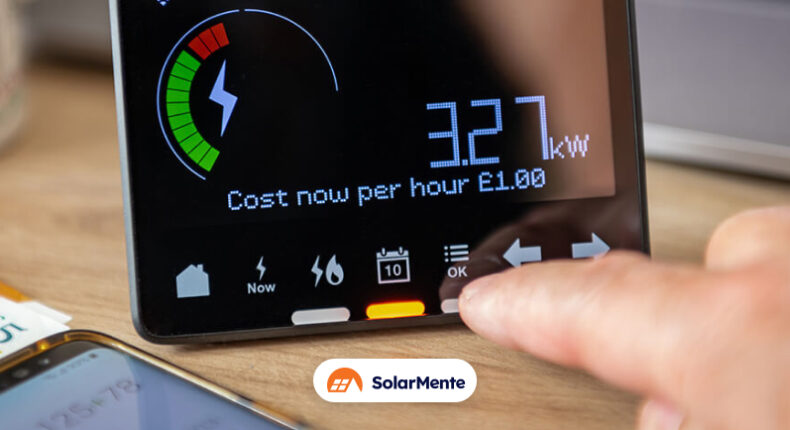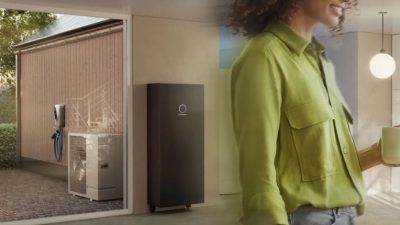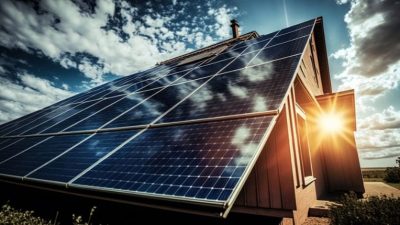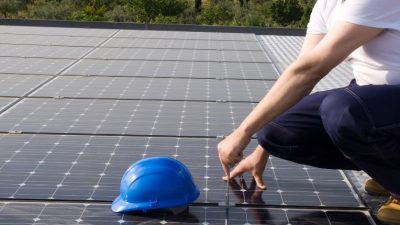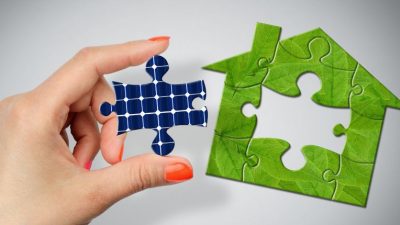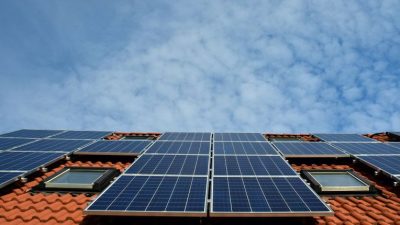You are considering installing a photovoltaic system in your home.
But what is not clear to you is whether, in order to receive the surplus compensation from the distribution company, you need to make any changes to the meter.
Because you have started to look for information and you see a term that is often repeated: bidirectional meters.
The problem is that you have not been able to clarify the implications of this element in a self-consumption installation and, much less, if it is essential in your case.
Well, don’t worry because we are going to clarify that here.
In this post we will tell you:
-
What is a bidirectional meter and how it works.
-
In which cases it is necessary to have this device.
-
How much a smart meter costs.
Listen up, we’re getting started.
What is a bidirectional meter?
The bidirectional photovoltaic meter is an element that serves to measure the energy flowing in a self-consumption installation in two directions:
-
From the grid to the user, what we call demanded energy.
-
From the consumer to the grid (injected energy).
It is an essential component in installations that opt for simplified surplus compensation.
And this is due to Royal Decree 244/2019.
This regulation introduced the possibility of obtaining economic compensation, i.e. a discount on the electricity bill when the surplus generated by solar panels is fed into the conventional grid.
So, if we want to know the amount to be discounted, it is necessary to measure the amount of energy injected.
It will be the distributor who transfers the meter data to the retailer to calculate the amount.
And be careful, because the bidirectional self-consumption meter must be approved by the distributor.
How does a bidirectional meter for self-consumption installations work?
The process is not complicated at all.
We explain it to you.
The first step is to generate electricity from the solar modules.
After that, the meter calculates the energy generated and subtracts it from the conventional grid consumption.
If you generate more energy than you consume, what we call surpluses, they are injected into the grid and the meter will calculate the surplus electricity.
Remember: this happens if you take advantage of simplified compensation, which, as a general rule, is the most common way for households.
Finally, the distributor takes a reading of the energy exported and imported into the grid.
Once it has this information, it communicates with the retailer so that it can apply the financial compensation determined in the monthly electricity bills.
When do I need a bidirectional photovoltaic meter?
As we have mentioned in previous sections, self-consumption with simplified surplus compensation requires a bidirectional meter.
The device calculates the energy consumed from the grid and injects it into the grid.
In this case, you do not need to install solar batteries to store the surplus energy, but you will be rewarded for this discharge.
And before we continue, it is important to emphasise that:
Only homes and businesses with an installed capacity of less than 100 kW are eligible for this type of self-consumption.
Who is exempt from installing bi-directional meters?
Here are the cases in which it is not compulsory to have a photovoltaic meter:
-
Self-consumption with surpluses without simplified compensation: we inject the surplus energy into the grid, but we do not receive compensation from the supplier, but rather it is sold at the current price on the electricity market. To do this, you must register as an electricity producer or enter into a representation agreement with a trader. In both cases, you must fulfil the fiscal and tax obligations related to an economic activity.
-
Self-consumption installations without surpluses: those households and companies that do not want to give surpluses to the electricity grid. In this case, they have an anti-discharge system so that the energy does not flow into the grid. The responsibility falls on the owners and no financial compensation is received. However, the bureaucracy is minimal.
-
Off-grid systems: they aim for complete independence from the conventional grid and do not discharge surpluses, but use solar batteries to store surplus energy and consume it when sunlight is not available. That is, when the solar panels are not working.
To make it easier for you to have a bird’s eye view, here is a table with a summary:
|
Type of installation |
Do you need bidirectional metering? |
|
Acceptance of simplified compensation |
Yes |
|
Self-consumption with surplus without simplified compensation |
No |
|
Installations without surplus |
No, but you must have an anti-spill system. |
|
Isolated installations |
No |
How many bidirectional meters do I need in my self-consumption system?
In the current self-consumption regulations, metering configurations have been simplified.
This means that in most cases only one meter is required.
However, this is not always the case.
Here we tell you in which situations you would need an additional device:
-
Shared self-consumption: this is crucial for the proportional distribution of energy among the participants in the installation.
-
Generation systems with a power equal to or greater than 12 MVA.
Finally, it is sometimes necessary to install another meter to monitor the photovoltaic system if we want to know the data of our energy consumption.
Why does this happen?
Well, as the meters are provided by the distribution company, not all of them provide detailed information on household consumption for control purposes.
How much does a bidirectional meter cost?
Before going into the prices, you should know that the photovoltaic meter can be rented or bought from the distributor.
If you buy it, it will be yours. In other words, you own it. With all that implies and all the responsibility for its operation and installation falls on you.
But you can choose to rent it. In fact, this is the most common option for homes, as well as being advisable.
Because the distributor will be responsible for the installation, maintenance or replacement of the device in the event of incidents.
That said, if you choose to buy one, the price of bidirectional meters is between 100 and 300 euros.
Remember that these are approximate figures.
But of course, the cost varies according to the model and the tariffs applied by the chosen professionals or the one established by the supply company in the event that it is responsible for the installation.
On the other hand, renting is much more practical and economical.
The rate varies between 0.80 and 0.90 euros and you will pay through the monthly electricity bills. Therefore, the cost amounts to around 10 euros per year.
How do I know if my meter is bi-directional?
It is not always easy to access meters.
For the simple reason that not all of them are located inside the dwelling itself.
Some buildings have meters in rooms, where we do not have easy access.
But we can see it on our electricity bill.
It is as simple as checking if it appears that your meter is remotely managed.
In 2019, it was established that all meters in Spain must be digitised or be remotely managed or smart.
And this type of device has the capacity to measure the energy flowing in both directions.
For this reason, almost all homes have a meter ready to account for the surpluses generated by our self-consumption installation.
However, you can request information from your energy supplier or consult with solar energy companies when calculating your budget.
If you want to opt for the second option, this is the way to go.
Now you know how bidirectional meters work.
With what we have seen here, it is enough to know how smart meters work.
But if you have any questions, just ask us.
Remember, however, that these devices are essential in order to qualify for simplified surplus compensation.
Otherwise, you will not be able to receive a discount on your monthly electricity bill for the surplus energy.
If you are sure you want to opt for this option for your self-consumption installation, all that remains is to choose the experts who will accompany you in this process.
Do you want our team to take care of your installation?
Click on this link to calculate your budget.
Frequently asked questions about bidirectional meters
With the installation of solar panels, do I need to change my meter?
Most probably not.
At present, most digital meters are bidirectional and do not require replacement. However, even if it is bi-directional, it may require a modification in its programming to measure surplus energy.
Don’t worry, the installation company will provide you with this information, whether you need to change the meter or modify the system.
If I choose simplified balancing, is it necessary to modify the existing meter?
It is not essential in most situations.
As in the previous case, dwellings already have this type of meter and no further modifications will be necessary.
Or it may be bi-directional, but you need to modify the programming to record the energy discharged to the grid.
In any case, if it is not a smart meter, you will have to make the replacement with the distribution company.
Which is better: renting or buying the self-consumption meter?
It is advisable to rent the self-consumption meter.
The tariff is reduced and in the event of any unforeseen event, the distributor will take care of any breakdowns. Whether it is installation, replacement or maintenance.

